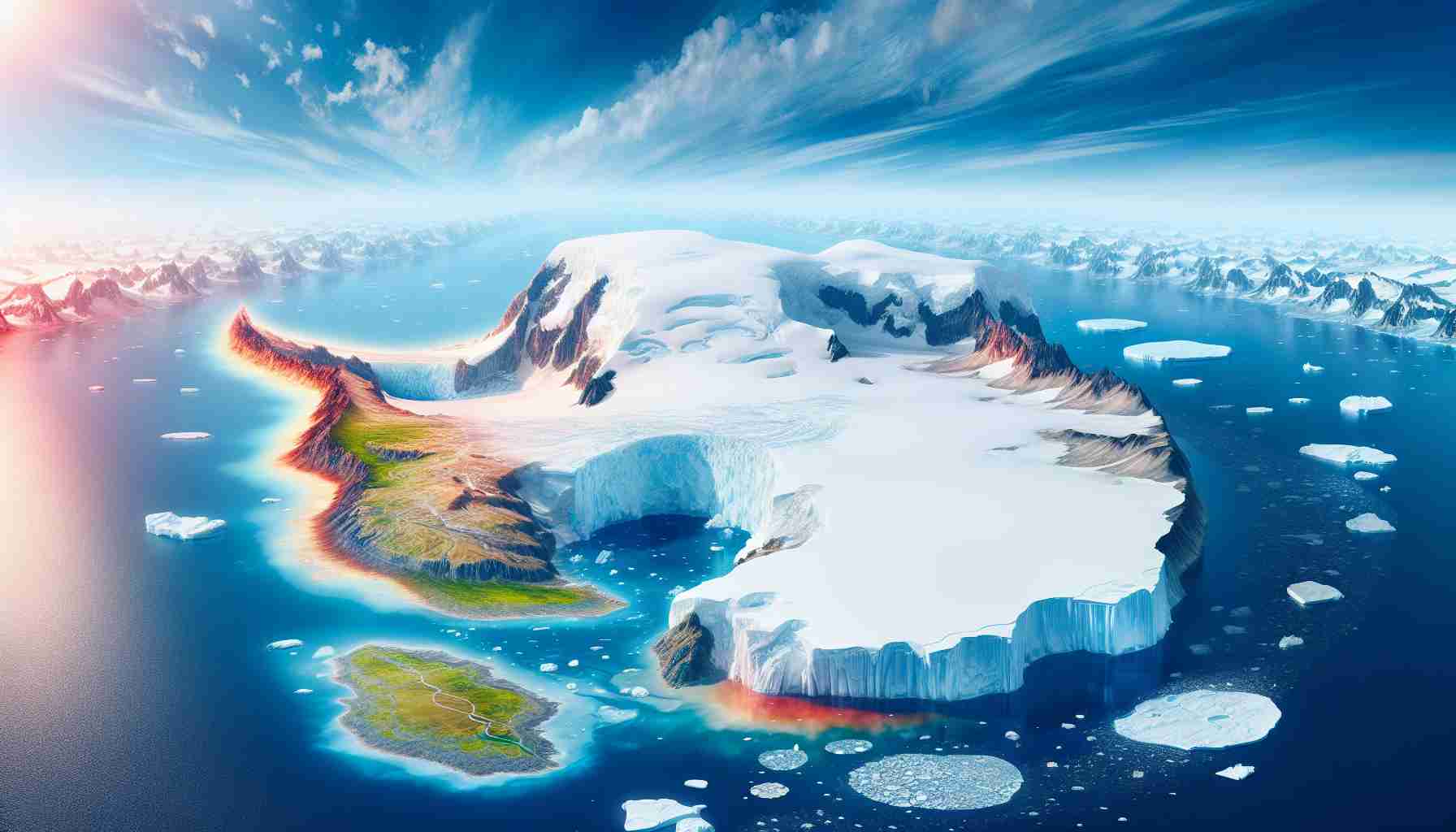
Antarctica is witnessing unprecedented climatic shifts, marked by record-low levels of sea ice during the winter months and an unexpected surge in plant growth driven by increasing temperatures. Recent reports indicate that the sea ice, essential for maintaining ecological balance, reached a critical low at the close of the 2024 southern winter for the second consecutive year. Data from the US National Snow and Ice Data Center reveals that the ice’s maximum coverage touched an alarming 17.2 million square kilometers, the second lowest measurement in over four decades of satellite observations.
This year’s peak represents a staggering reduction of 1.6 million square kilometers from the average maximum, a space comparable to three times the size of mainland France. Seasonal patterns dictate that sea ice expands during winter and diminishes in summer; however, the current decline is raising alarms as the southern hemisphere prepares for warmer months.
The ramifications of this ice reduction extend beyond Antarctica, heightening concerns about the region’s vital role in climate regulation and global sea levels. The decline in sea ice compromises its ability to reflect sunlight, leading to increased ocean heat absorption and exacerbating climate change.
Experts have long understood that the continent would experience delayed warming trends; however, the pace and extent of these changes are now shifting rapidly. Ongoing research seeks to understand more about these phenomena and their broader implications on the global climate system.
Significant Changes in Antarctica’s Climate: An Emerging Crisis
Antarctica’s climate is undergoing profound transformations that pose serious implications for the global environment. Observations indicate not only a decline in sea ice but also notable changes in weather patterns and ecology that have been largely underreported.
What are the primary drivers behind the changing climate in Antarctica?
Antarctica’s climate shifts are primarily driven by a combination of global warming, ocean circulation changes, and atmospheric phenomena. Rising greenhouse gas concentrations, primarily due to human activity, are leading to increased temperatures. Furthermore, variations in ocean currents, such as the interplay between the Antarctic Circumpolar Current and regional upwelling systems, have been linked to the warming observed around the continent.
What are the key challenges associated with these climatic changes?
One of the foremost challenges is understanding the feedback mechanisms inherent in the changing climate system. For example, the melting of the Antarctic ice sheets contributes to rising sea levels; however, as ice shelves collapse, they may also lead to accelerated ice flow from the landmass into the oceans. This creates a cycle that can amplify further warming.
There are ongoing controversies regarding the projection of sea-level rise. While some models predict a gradual increase, others, acknowledging the rapid melting observed, suggest a potential rise of several meters over the coming centuries, which could displace millions of people globally.
What advantages and disadvantages arise from these changes?
The advantages of climate shifts in Antarctica are few, yet some isolated ecological benefits have been observed, such as the potential for expanded habitats for certain species adapted to warmer conditions. The onset of new biodiversity could lead to increased research opportunities in the fields of biology and ecology.
However, the disadvantages are far more significant and include extensive impacts on global weather patterns, the extinction of unique Antarctic species, loss of habitat, and threats to indigenous ecosystems. The melting ice also leads to accelerated sea level rise, threatening coastal cities and ecosystems worldwide, and disrupting marine food chains dependent on stable sea ice conditions.
What are the implications for global climate regulation?
Antarctica acts as a critical regulator of the Earth’s climate. The alteration of its climate systems can influence weather patterns far beyond its shores, affecting rainfall, temperatures, and storm patterns across continents. Moreover, the loss of reflective ice surfaces not only contributes to local warming but also influences global temperature rises.
Can we predict how Antarctica’s climate will change in the coming decades?
While scientists utilize advanced modeling technologies, predictions remain uncertain due to the complex interactions between climate systems, ocean currents, and ice dynamics. Continued research is essential for improving these models, particularly to predict potential tipping points that could lead to irreversible changes.
What steps are being taken to mitigate these changes?
International cooperation through agreements like the Antarctic Treaty System aims to promote the conservation of the Antarctic environment. Additionally, researchers are advocating for immediate and robust action against climate change, emphasizing the importance of reducing greenhouse gas emissions and investing in renewable energy sources to slow the warming trends affecting Antarctica and the entire planet.
Antarctica’s climate is undeniably changing, with significant implications for global ecosystems and human populations. Close monitoring and proactive intervention are crucial to address the emerging challenges posed by these significant climatic changes.
For more information, you can visit NASA or CNN for updates on climate research and news.



